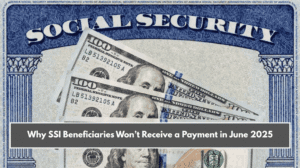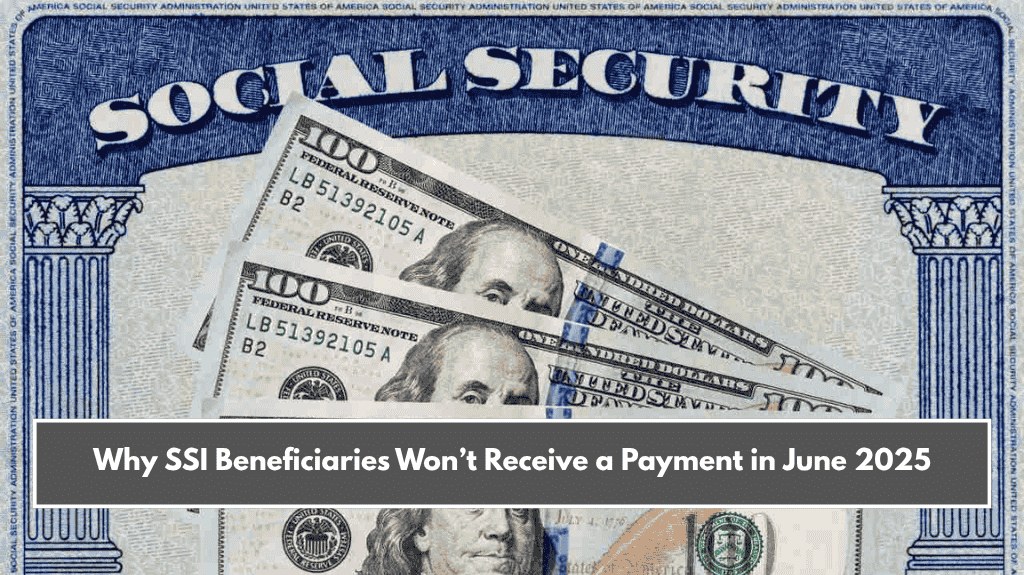The start of May 2025 brings some important changes to the Social Security payment schedule, especially for Disability (SSDI) beneficiaries. Unlike other months, the first SSDI payment won’t be sent on the usual 3rd of the month, but will be moved forward to May 2. This adjustment is due to May 1 falling on a Thursday, and it affects all beneficiary groups.
In addition to this, retirees in groups 2, 3, and 4 will have to wait an extra week to receive their payments. These small changes to the schedule can be confusing, so it’s important to stay on top of the dates and check when your payment is coming.
Let’s walk through the potential changes and requirements to ensure that you don’t miss your payment.
Why Could SSDI Beneficiaries Lose Their Payment?
Though SSDI benefits usually provide a stable income, there are certain circumstances that could cause a loss of benefits. Being aware of these situations will help you avoid disruptions in your payments.
1. Returning to Work and Exceeding the Income Limit
If you return to work and earn more than the allowed income threshold, your SSDI benefits could be suspended or stopped. The Social Security Administration (SSA) sets a monthly income limit, and exceeding this limit may mean you no longer meet the criteria for disability benefits.
2. Failure to Report Medical Changes
If your health condition improves, you must report the change to the SSA. Failing to do so could be considered a violation of program rules. This could lead to a suspension or even a termination of your benefits.
3. Failure to Cooperate with Disability Reviews
The SSA conducts periodic disability reviews to ensure that you are still eligible for benefits. If you fail to cooperate or provide required documentation during these reviews, your benefits could be suspended or terminated.
4. Reaching Full Retirement Age
When you reach full retirement age, your disability benefits will automatically be converted to regular retirement benefits. While this doesn’t mean you lose your payments, it changes the category of your benefits.
What to Do:
Staying informed, reporting changes, and cooperating with the SSA are key steps to avoid issues with your SSDI payments. Always make sure to follow the rules and keep your information up to date.

Maximum SSDI Payments in May and How to Apply for Supplemental Help
If you meet all the necessary requirements, SSDI beneficiaries could receive up to $3,822 in May 2025. This maximum amount is for those who had long, high-income careers before becoming disabled. However, not everyone receives this amount. Many SSDI payments are lower due to factors like work history or the age at which benefits began.
What if My SSDI Payment is Lower?
For beneficiaries who receive lower SSDI payments, there are supplemental programs that can provide extra help. These include:
- Supplemental Security Income (SSI): This provides extra support for people with limited income and resources.
- SNAP (Supplemental Nutrition Assistance Program): This helps with food expenses.
- State Financial Assistance Programs: These vary by state and can offer additional support.
How to Apply for Supplemental Help
To apply for these extra programs, you must meet specific requirements. The first step is to contact your local Social Security office or visit the SSA’s online portal to check eligibility and submit applications.
Important:
Always ensure that your information is up-to-date with the SSA and apply for supplemental help as needed to ensure you have the support you require.
By staying on top of the payment schedule, reporting any changes in your situation, and seeking additional assistance if needed, you can continue to receive your SSDI payments without issues. Keep track of important dates and reach out to the SSA for support whenever necessary.















